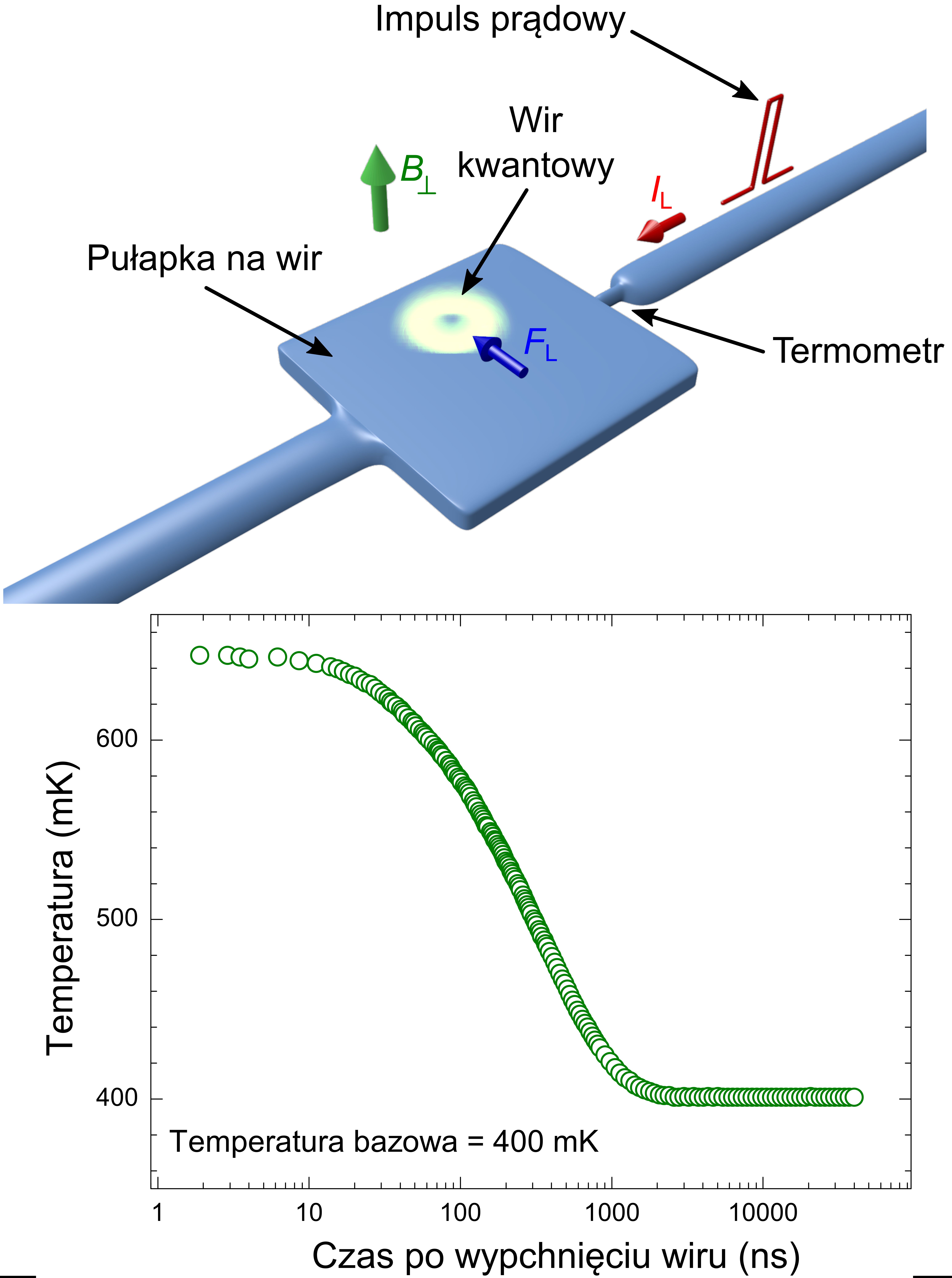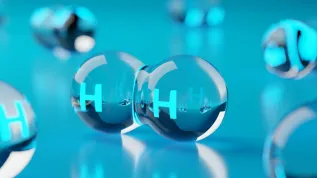
Physicists from Warsaw have built a trap for 'quantum tornadoes' - single quantum vortices that appear in superconductors. Thanks to the world's fastest thermometer of their own design, they have studied these vortices and determined how to control them. Now scientists propose to use this idea as memory in quantum computers.
Research under the supervision of Professor Maciej Zgirski from the CoolPhon group at the Institute of Physics of the Polish Academy of Sciences (PAS) in Warsaw was published in Science Advances.
WHEN A SUPERCONDUCTOR BECOMES RESISTANT
At temperatures close to absolute zero, things happen in very small objects that philosophers have never dreamed of. For example, some materials become superconductors - current can flow through them without any resistance. Some superconductors are sensitive to the presence of a magnetic field (like Superman to the presence of kryptonite).
Such materials include aluminium. If it is cooled to about 1 Kelvin, it gains 'superpowers' and becomes a superconductor. However, if we apply an increasingly stronger magnetic field to this superconductor, the material will lose its unusual properties at some point and become an ordinary metal again.

However, interesting things happen before this change is complete. If the magnetic field is properly selected, the superconductor begins to 'defend itself' against losing its 'superpowers'. Currents screening the magnetic field appear in it, and then the material - if it is thin enough - lets in a tiny quantum vortex of current, a nanotornado.
'Such a vortex is an indivisible quantum object, like an electron, photon or phonon. It is topologically protected', Dr. Marek Foltyn from PAS says.
In this tiny tornado, pairs of bound electrons (Cooper pairs) spin around a core with a diameter of approx. 150 nm. Such a vortex - as an obstacle - does indeed spoil the properties of the superconductor, but the vortex motion itself takes place without energy loss - as only possible in superconductors. If the conditions do not change any further, the electrons in such a tornado can spin forever. It is a stable, indivisible quantum entity.
Quantum vortices have so far been considered villains in the superconducting industry.
'The movement of these vortices can completely destroy the operation of superconducting devices, such as magnetic resonance coils, radiation detectors or resistance-free transmission lines’, says Konrad Norowski, a doctoral candidate at PAS’s Institute of Physics.
Dr. Foltyn says that a vortex can really mess up a superconductor if it is uncontrolled. However, if it can be tamed, it can become a completely new, positive superhero.
Scientists have just shown a way to control vortices. They have developed a trap that catches vortices, and they have demonstrated a way to release them from this nano-prison.
The Polish superconducting vortex trap is a square aluminium 'nanobox' placed between two cables. In this box - as scientists from the Institute of Physics PAS have shown - vortices can be placed using an appropriately selected current pulse (several of them can fit there), and then pushed out - also using a current signal.
'In light of our results, certain theories describing superconductors, especially a certain model describing what happens when a superconductor switches to a resistive state, will be untenable', says Dr. Foltyn.
SPINNING MEMORY
The research also has practical significance. Such a vortex trap could work as a memory cell in quantum computers. The presence of a vortex in the trap would mean state 1, the absence of a vortex - state 0.
Quantum computers need not only qubits, in which information will be processed, but also memory cells, where information will be recorded for longer and stored for later processing.
According to the researchers, vortices would work well in quantum computers because they are stable, they are created in conditions that are quite compatible with current technologies used in this industry - in devices made of superconducting aluminium and at similarly ultracold temperatures.
Dr. Foltyn says that many scientists have studied vortices, including Nobel Prize winner Andre Geim, who later moved on to graphene. The problem was that no one had ever managed to control these vortices with such precision before. 'We did it. And we want to show the good side of the vortex', says Dr. Foltyn.
POLISH SUPERSENSOR - THE WORLD'S FASTEST THERMOMETER
Polish physicists have managed to discover the secrets of vortex behaviour, because previously they had developed the world's fastest thermometer. It can measure temperature in superconductors with a stunning time resolution: 1 nanosecond (one second is one billion nanoseconds). And this measurement is performed with an accuracy of about 100 microkelvins (i.e. a ten-thousandth of a degree C). 'We wondered whether to submit our solution to the Guinness Book of Records', Dr. Foltyn jokes.
There are some catches: the measurement does not concern a single situation of temperature measurement, but is a description of what happens very many times in repeatable processes. Experiments are carried out in cryogenic conditions thousands of times per second, and based on them the probability of the thermometer switching to a resistance state corresponding to the state of a given situation is determined - e.g. a trap with or without a vortex. Thanks to this temperature-dependent probability, it is possible to extract extremely detailed information about thermodynamic processes that occur extremely quickly in nanomaterials.
Professor Maciej Zgirski's team's research lays the foundations for a new branch of physics - switching nanothermometry using superconductivity.
The researchers add that - depending on how it is used - their nanodevice can also serve as a random number generator, calorimeter, bolometer, magnetic field sensor. 'Thanks to this device, we found out how much energy was released when a single vortex is ejected from the nanostructure. It turned out that the measured energy corresponded to the energy of a single quantum of visible light', says Norowski. He adds that this is not the limit of measurements yet. The device can measure photons with energy a thousand times smaller than visible light.
The research will be conducted as part of the International Centre for Interfacing Magnetism and Superconductivity with Topological Matter - MagTop. The Foundation for Polish Science awarded the MagTop Centre nearly PLN 30 million.
Professor Zgirski's team's is now looking for doctoral candidates and postdocs to develop the project.
'We want to conduct this research in Poland. We want original and ambitious ideas to be created and implemented in our country', says Dr. Foltyn. (PAP)
PAP - Science in Poland, Ludwika Tomala
lt/ bar/ kap/
tr. RL













